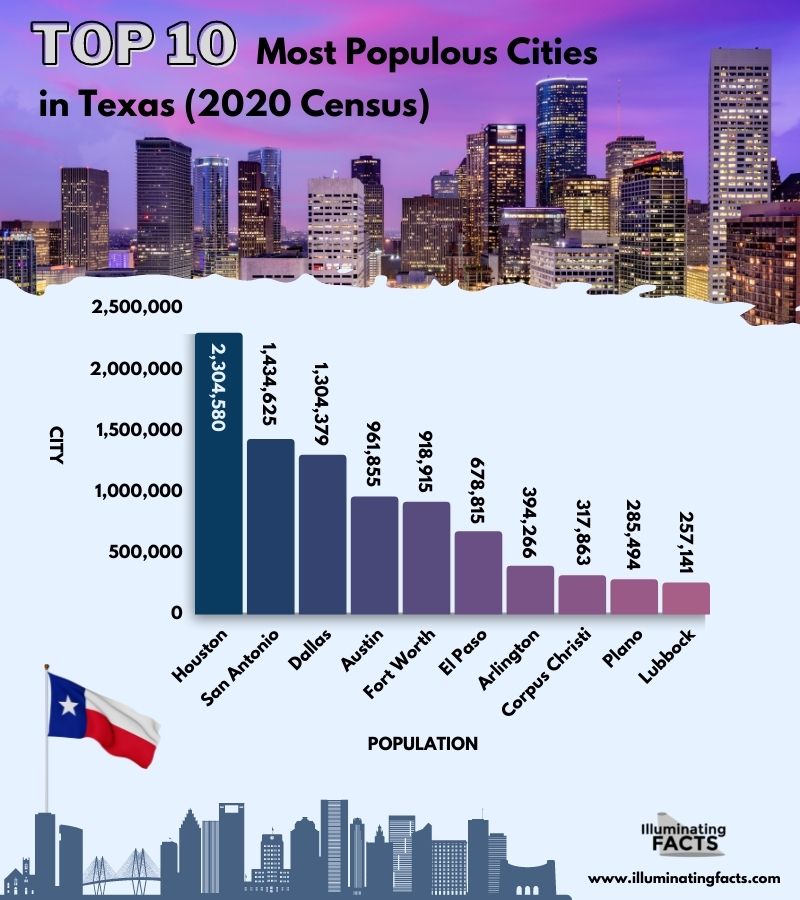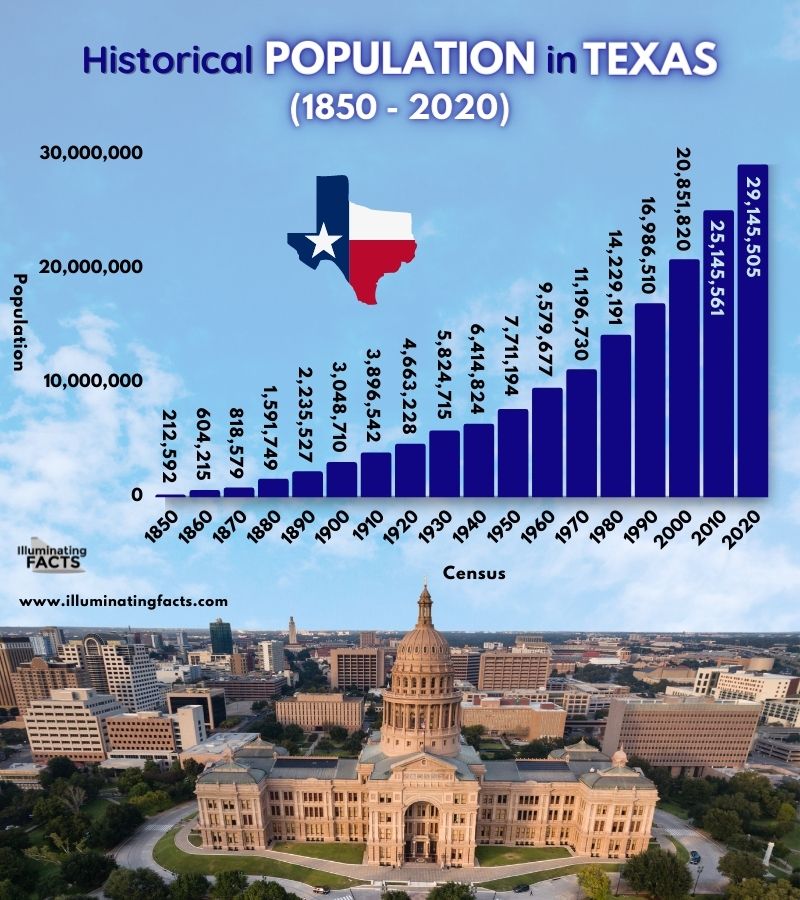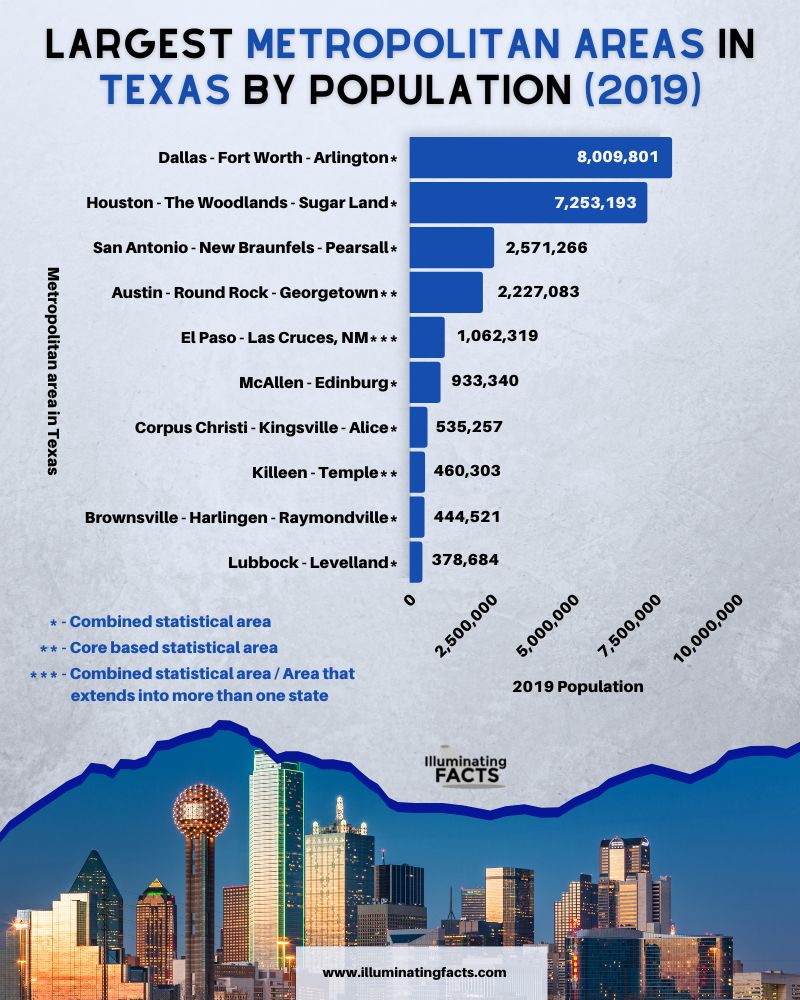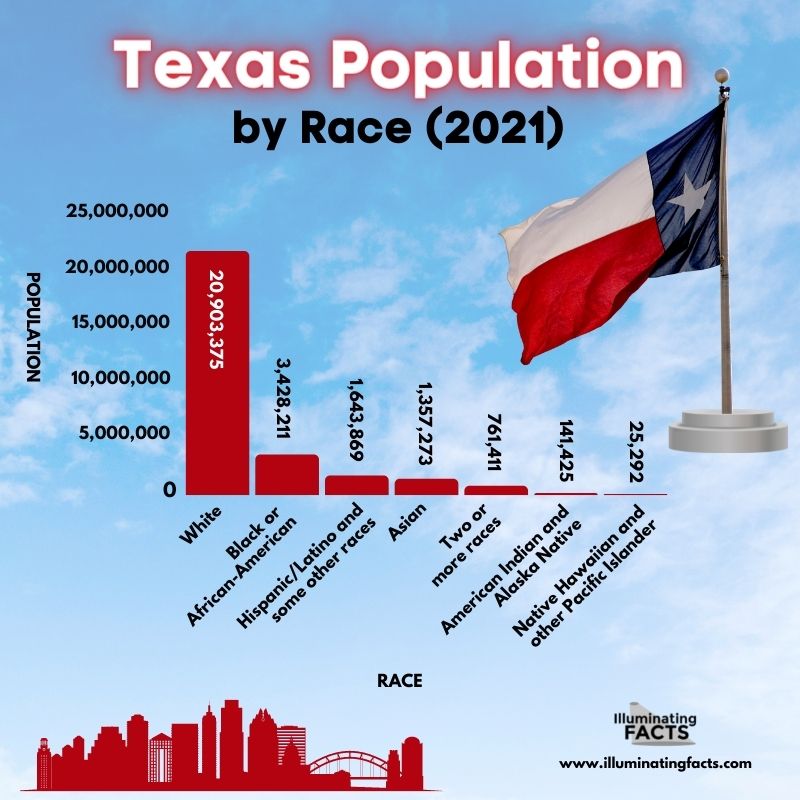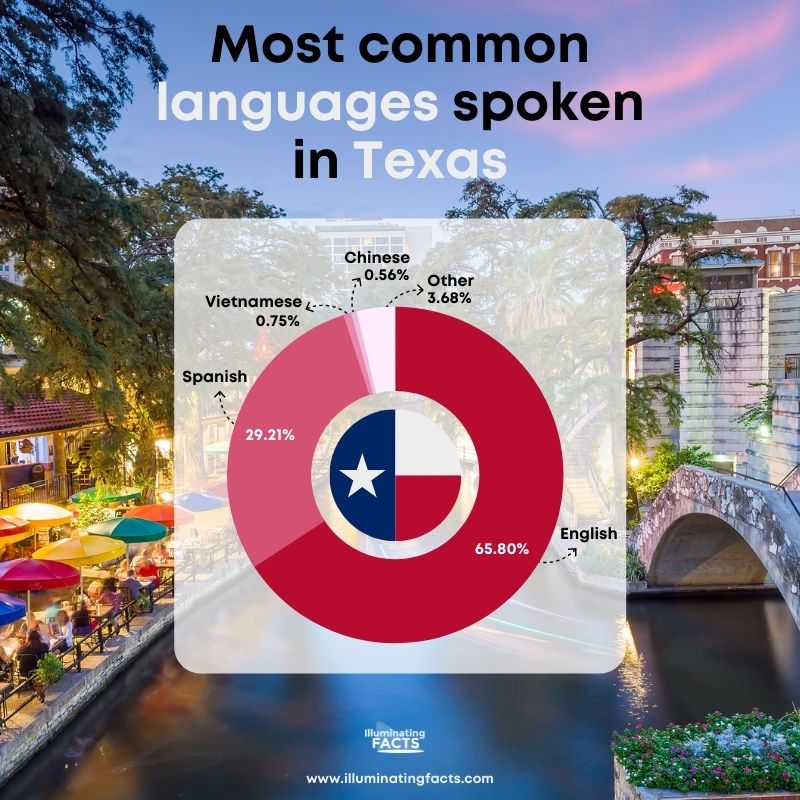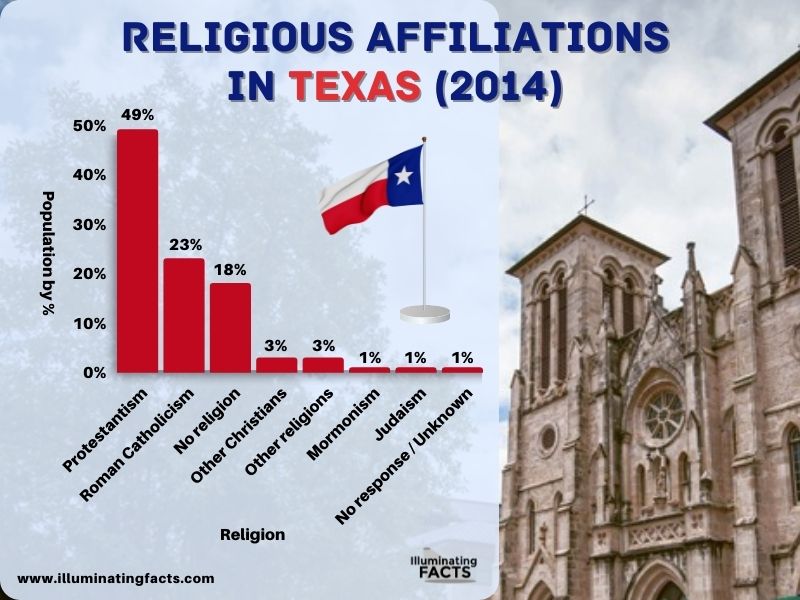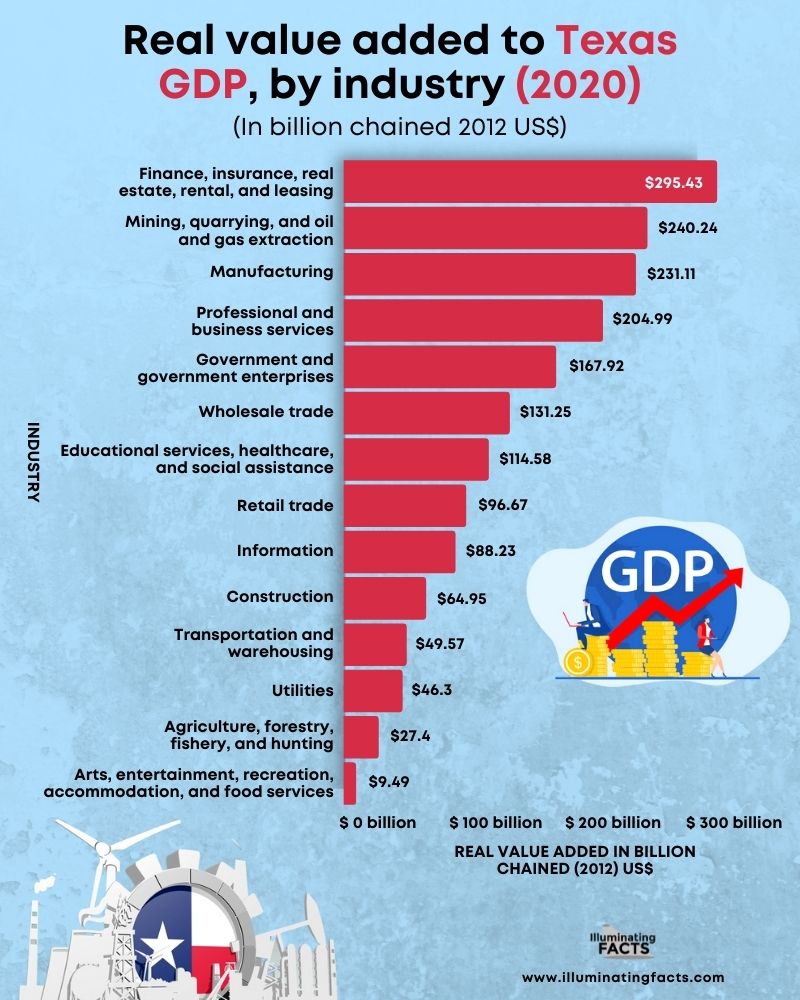Texas is a state in the South Central region of the US and is the second-largest state in the country. The state covers an area of 268,596 square miles with more than 29 million people residing in it. Texas is known for the variety in the landscape as well as the culture that exists in the state. It is the state in the US with the second-highest gross state revenue. All of these facts point to the fact that Texas is big in terms of numbers. We can learn more about Texas with the help of the following statistical analysis.
Find Out More…
Top 10 Most Populous Cities in Texas
As stated earlier, Texas hosts over 29 million people with most of them residing in Houston. 2.3 million people live in Houston alone followed by San Antonio with 1.43 million people and Dallas with 1.3 million citizens. These are considered to be the top three cities in the state. All other cities have fewer than 1 million people each. These include Austin, Fort Worth, El Paso, Arlington, Corpus Christi, Plano, and Lubbock. However, these small cities are also highly active with a wide number of residential and commercial projects undergoing. It will ultimately increase the population in Texas in the future.
Historical Population in Texas
Texas has not always been this populated and it was once quite small in terms of population with fewer than 300,000 people. About 170 years ago, in 1850, Texas had a population of 212,592 people with a 3 times increase in the ten years and reached 604,215 people in 1860. In 1880, Texas was home to 1.5 million people. From this time, the 10-year increase was around 800,000 people. By 1900, 3 million people lived in Texas. In 1950, the population in Texas was 7.7 million people. By 2000, there was almost a 3x increase compared to the population in 1950 as the total population reached 20 million citizens. It took Texas only 20 years to reach 29 million citizens.
Largest Metropolitan Areas in Texas by Population (2019)
There are several metropolitan areas in Texas and each one of them has a unique community. The metropolitan areas serve different businesses and have some of the best communication links too which is why many people prefer to live over here. Dallas – Arlington is the largest metropolitan area with a population of over 8 million followed by Houston – Sugarland with a 7.2 million population. The other metropolitan areas have populations of less than 2.6 million each. San Antonio – Pearsall and Austin – Georgetown have around 2.4 million people each. Other metropolitan areas in this list include El Paso – NM, McAllen – Edinburgh, Corpus Christi – Alice, Killeen – Temple, and Brownsville – Raymondville.
Texas Population By Race (2021)
There are several races residing in Texas at one time. However, Whites are still dominating the state as they account for over 20.9 million people as of 2021. This means that only 9 million other races are residing in Texas. There are about 3.4 million African American people living in Texas. Surprisingly, one of the highest populations of Asians is in Texas with about 1.3 million. About 760,000 people belong to 2 or more races. There are 1.64 million people belonging to some other races.
Most Common Languages Spoken in Texas
Being a US state, most might assume that English is the only language spoken in Texas but this is not it. There are other common languages spoken by more than 1/4th of the population of Texas. While English is spoken by the 65.8% population, Spanish is also spoken quite commonly in Texas by 29.21% of people. Vietnamese and Chinese are relatively less popular with 0.75% and 0.56% speakers, respectively. About 3.68% of people speak some language other than the ones mentioned above. This also shows that Texas is a diverse state with multiple languages.
Religious Affiliations in Texas
Being home to over 29 million people, one can assume that there would be multiple religions existing over here. A branch of Christianity, Protestantism, is the most popular religion in the state of Texas with 49% of the population following it. There are some differences between this and Roman or other forms of Catholicism. 23% of people in Texas follow Roman Catholicism while 3% belong to other branches of Christianity. It can be seen that the dominance of Christinary and its branches are all over Texas. However, Mormonism and Judaism also account for 1% each. 3% of people belong to all other religions while the other 3% have no religious affiliation.
Real Value Added to Texas GDP by Industry (2020)
As Texas is one of the biggest states in America, it has several industries and businesses which account for a large sum of the Gross Domestic Product of America. As of 2020, Texas contributed $295.4 billion in terms of real value to the GDP. Mining, quarrying, and Oil Extraction come second with $240.24 billion in terms of GDP contribution. Manufacturing services are also quite popular in Texas with $231.11 billion in contribution. Besides these top 3 industries, other sectors also provide a major sum of revenue to Texas GDP which include Government Enterprises, Wholesale Trade, Education, Retail, Information, Construction, Transportation, Utilities, Agriculture, and Arts.


